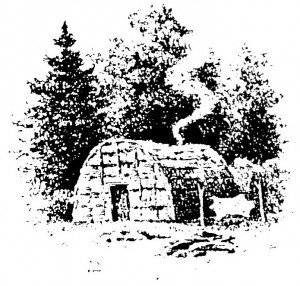
When I set out to write From Forest to Fields: A History of Agriculture in New York’s Champlain Valley, I became discouraged by the mixed information coming from various authors.
While there is archeological evidence of Native settlements in Plattsburgh at Cumberland Bay, across Lake Champlain in Vermont and along the Hudson River and its tributaries, little information exists for the rest of the Adirondack Coast.
In the following, I will present the information from resource materials so that readers may better understand the conclusions presented in our short history.
The obvious starting place for understanding pre-European life in the Champlain Valley was to explore the journal of Samuel de Champlain, who recorded what he observed of Native life. In “Voyages,” he states:
“I made inquiry of the savages whether these localities were inhabited, when they told me that the Iroquois dwelt there, and that there were beautiful valleys in these places with plains productive in grain, such as I had eaten in this country, together with many kinds of fruit without limit.”
In this context, it is hard to determine what “localities” the Natives are referring to, but if we explore deeper, Champlain states the following after the conflict at Ticonderoga artfully depicted in the image at the top of the page:
“…the raiding party amused themselves plundering Indian corn and meal, which had been raised on the clear ground.”
Therefore, we can determine the Champlain did in fact see native agricultural development in New York’s Champlain Valley. However, if we move forward to 1858, Flavius J. Cook, author of Home Sketches of Essex County, has a very different perspective.
“…Few sounds, save of the warwhoop and of the wild bird and beast- few movements, save of the human or brute forms, crouching, contending, retreating or simply passing by, disturbed the western shore of Champlain in its earliest ruggedness and beauty.”
Cook concludes that prior to the European exploration, that the area between Horicon and Lake Champlain was an uninhabited no-man’s land between warring tribes, despite Champlain’s contrary observations. This conclusion was even shared in the 20th century in the Ticonderoga Historical Society’s Patches and Patterns from Its Past (1969).
“For many generations, perhaps centuries, it [Ticonderoga] had been an in-between land, the rich hunting ground of and often the battle ground of the primitive people to the north and south of us. Archeologists hint at very ancient cultures that occupied the Champlain Valley after the last glacier withdrew some twelve to fourteen thousand years ago. The small study that has been made in the field does not seem to point to any particularly heavy population at any time in our ancient past. Here the grinding mass of ice that scooped out or valleys and in its melting heaped up our useful deposits of sand and gravel seem to have been found in slow procession by mosses, grasses, shrubs and forest, with very little disturbance by homo sapiens except as he came to feast upon the plenitude of fish and game that were to be found here.”
What we can ascertain is the knowledge of agriculture of tribes in the surrounding area. This information is best presented in Peter S. Palmer’s History of Lake Champlain 1609-1814(1886)
The Iroquois were powerful, plitic, warlike and courageous … They lived in villages, around which they had extensive cultivated fields … The Algonquians were a warlike nation and a migratory people, disdaining the cultivation of the soil and depending altogether on the produce of the chase. The Hurons had some slight knowledge of husbandry, but were more effeminate and luxurious than the other tribes, and inferior in savage virtue and independence. They lived in villages, of which the nation possessed twenty, but were inferior in construction and strength to those of the Iroquois.
The conclusion that we draw in From Forest to Fields is that it would be shortsighted to overlook Champlain’s observation of corn and meal grown at Ticonderoga, particularly with the knowledge we have of the Algonquin, Iroquois and Huron tribes living in the surrounding areas. It is much more likely that migratory tribes lived in this area, depending primarily on cultivated wild foods, fish and game. To a much lesser extent, they would grow corn, beans and squash (the Three Sisters) as part of a companion planting system that left them free to pursue their seasonal migration from winter villages to summer camps near the Lake. Since this is a more “mobile” culture, it would be easy for a tribe to retreat into the forest in instances of impending danger, and for observers to conclude that no Native settlements existed in this area.
 The Native American Institute of the Hudson River Valley and the New York State Museum invite you to submit a paper or other presentation to be given at the 13th Mohican/Algonquian Peoples Seminar held at the New York State Museum in Albany on Saturday, September 28, 2013.
The Native American Institute of the Hudson River Valley and the New York State Museum invite you to submit a paper or other presentation to be given at the 13th Mohican/Algonquian Peoples Seminar held at the New York State Museum in Albany on Saturday, September 28, 2013.







